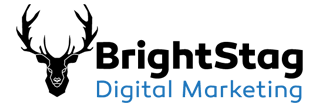Increase Conversions with Better Landing Page Anatomy
Anybody using inbound marketing has dreamt about creating landing pages that convert all visitors into leads. It’s a great dream to have, but it’s obviously not realistic. However, with the right landing page anatomy, you can turn more visitors into leads.
What’s a Landing Page Anyway?
If you don’t know what a land page is, it’s important to grasp the concept before moving on with inbound marketing. A landing page is simply a web page designed to capture leads from your marketing campaigns. It usually targets a specific audience or location and may be used as the first page a visitor sees when clicking on an ad or link in an email.
Landing pages are designed to cover one topic, such as promoting a webinar or eBook. They may even allow a visitor to download free content, such as a white paper, report or free eBook. Some landing pages promote free offers, trial offers or provide product demonstrations.
Get to the Point and do it Fast
One of the key factors in creating better conversions from landing pages is to get to the point. When a visitor shows up, they need you to answer their questions as fast as possible. Four key questions have to be addressed in the first few seconds including:
- What’s the offer?
- How will the visitor benefit?
- Why do they need your offer immediately?
- How can they get what you’re offering?
If you answer these questions quickly, you’re at least half way to better conversions with your landing pages.
Headline Must be Compelling
A compelling headline comes first with landing pages. If you cannot grab attention with your headline, you cannot expect a visitor to make it down the page and take advantage of your offer. Make sure your headline is powerful and uses a relevant keyword phrase, if possible.
Fulfill the Promises of the Headline
Even with the most compelling headline possible, you may not get the conversions you want. However, if you fulfill the promise of the headline, your visitors will be more likely to become leads.
In the case of a Google Ads campaign, when your ad content lines up with your headline and page content, your Google Ads Quality Score may be better, which could translate into a lower bounce rate and cheaper cost per click.
Use Persuasive Call-To-Action Phrases
Another very important part of your landing page is the CTA or call-to-action. You need to tell your visitors what to do and this should be no longer than seven words. Use action verbs, such as create or get instead of passive words like submit. You want to direct your visitors and literally tell them what to do next.
Don’t Over Ask for Information
If you only need an email address, only ask for an email address. Making a visitor fill in a long form won’t get you more leads. Effective landing pages don’t ask for much more than a first name and email address, unless you really need more information. You can gather more information later throughout the lead process, anyway.
When you want your landing pages to convert better and you want your inbound marketing to produce more leads, you need to align your headline, message and offer properly. Use these tips and reassess your landing pages often to ensure they become lead generating machines.



